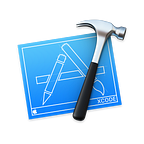The MacBook Pro Touch Bar: Fixing a usability disaster with black electrical tape
On Monday, I got a new Touch Bar-equipped MacBook Pro at work.
From what I had been reading, I was primed to hate the new keyboard and — at worst — to consider the Touch Bar an interesting gimmick that might marginally improve the utility of the laptop.
I am also in the market to replace my personal laptop, a 4-year-old MacBook Air that struggles with Xcode and the Swift compiler. So I was happy to get a chance to test drive the new machine as my work laptop first, before committing to a specific model for myself.
I’m glad I did. At least now I won’t be making the mistake of buying one with a Touch Bar.
First, the good news: the keyboard itself. As a developer, I did not get sucked into The Great Escape Key Freakout of 2016. From the screenshots I had seen, the escape key seemed to be available in every situation where I might need it: Xcode, the Terminal app, etc.
Instead, I was worried I’d hate the new “low-travel” keyboard that evolved from the previous release of MacBooks. I tried one of those keyboards briefly, and it had a jarring feel while typing, like trying to rapidly descend a flight of stairs whose steps are too short.
But after a few days with the new MacBook Pro keyboard, I love, love love it. The clickiness and responsiveness of the keys is quite pleasant. Those who have complained the keys are too loud are people who’ve clearly never encountered an IBM Model M. Personally, I love the sound as much as the feel.
While the half-height up/down arrows take a little getting used to, that’s the sort of experience one expects with a new laptop, as keyboard layouts tend to evolve at the margins over time. On the whole, I can’t remember a physical keyboard made by Apple that I enjoy typing on this much. It really is that good — despite the shorter key travel.
Unfortunately, the Touch Bar is an entirely different story. I suspect it got released in its current incarnation without sufficient user testing, because the behavior of it is really quite maddening.
It’s impossible to type without constantly invoking Touch Bar functions by accident. The fundamental problem of the design is this: in attempting to replace physical keys with virtual ones, Apple forgot that physical keys require deliberate pressure to be invoked.
The Touch Bar requires no pressure at all. If your skin comes in contact with the Touch Bar, even accidentally, a touch is registered and an action is carried out.
So if you thought the problem with the new MacBook Pros was the lack of an escape key, you will be quickly disabused of that notion: you will be hitting the escape key all the damn time now, because you no longer need to press it down; your skin just needs to have some form of glancing contact with it.
After many years of typing, I’ve apparently developed a habit unbeknownst to me until now. I have large hands, so when I’m not typing, my left hand tends to rest with the palm below the keyboard and my fingertips just above the top row of the keys. As I move to type, my fingertips must graze against what used to be the function key row. That never caused a problem before, because invoking those keys used to required me to push them. Now, no pressure is required; just contact.
In less than a week of use, I’ve cancelled out of countless dialog boxes — in several cases losing the work of painstakingly filling out excruciatingly detailed forms. I’ve also accidentally sent partially composed e-mails, set my chat status to Offline so co-workers couldn’t find me, etc. It finally dawned on me this morning that I’ve done far more with the Touch Bar accidentally than I have intentionally.
I’m sure I’ll be told, a la the “you’re holding it wrong” antenna excuse, that the problem is me, that I shouldn’t have let decades of keyboard use train me to rest my hands in certain spots. Or that people with smaller hands don’t seem to have this problem. I’m sure some will say that there’s a more Apple-y place for me to rest my hands, and if I’m willing to spend a few months retraining myself to do it properly, I’ll learn to love the Touch Bar.
Hogwash. The current iteration of the Touch Bar is a usability disaster of epic proportions. It’s a nice concept; pretty, and makes for a cool demo. But Apple needs to try again with the implementation. Hopefully version 2.0 of the Touch Bar will be pressure-sensitive, so people like me aren’t constantly having their computer do seemingly random things.
In the meantime, Apple thankfully offers the new MacBook Pro in a 13" configuration with no Touch Bar. For those who want the 15" screen, get used to a Mac that responds to microaggressions of skin contact with hair-trigger sensitivity.
Or, you can just do what I did, and cover the thing with black electrical tape, exposing only the rightmost edge where the Touch ID is—the only part of it that works as expected.
Of course, once you tape up, you lose the precious escape key too.
So I guess the people warning me about the ramifications of a missing escape key were right after all.
